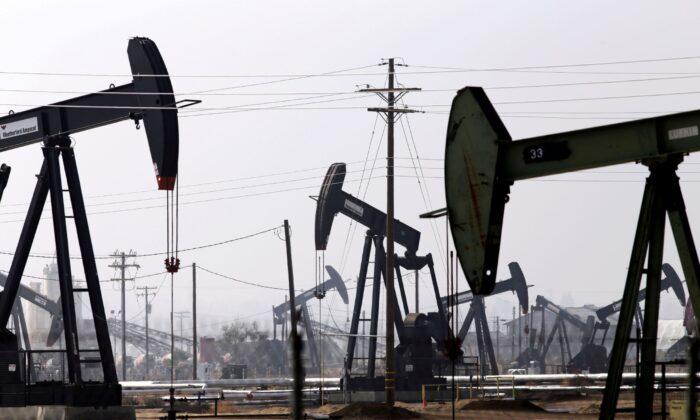LONDON—Oil prices edged lower on Tuesday but remained near three-week highs on heightened Middle East tensions and as China showed some signs of economic recovery.
Brent futures dipped 29 cents or 0.35 percent to $83.27 a barrel by 0912 GMT.
U.S. West Texas Intermediate (WTI) crude for April delivery fell 38 cents, or 0.38 percent, to $78.08 a barrel. The March WTI contract rose 8 cents or 0.1 percent to $79.27 a barrel ahead of its expiry during the session.
There was no settlement for WTI on Monday due to a U.S. public holiday.
Crude markets were “marginally lower” in “quiet trading over the Presidents’ Day holiday in the U.S. and as demand concerns offset ongoing Middle Eastern geopolitical tensions,” IG market analyst Tony Sycamore said in a note.
Iran-aligned Houthis continued their attacks on shipping lanes in the Red Sea and Bab al-Mandab Strait, with at least four more vessels hit by drone and missile strikes since Friday.
One of them, the Belize-flagged, British-registered and Lebanese-managed Rubymar cargo vessel in the Gulf of Aden, was in danger of sinking, Houthis said, raising the stakes in their campaign to disrupt global shipping in solidarity with Palestinians in Gaza.
“Signs of stronger demand in China also boosted sentiment,” ANZ analysts wrote in a note.
Tourism revenue in China surged 47.3 percent year-on-year and rose above pre-COVID levels during the national Lunar New Year holiday that ended on Saturday.
China also made a record cut to a benchmark reference rate for mortgages on Tuesday, in a bid to shore up its beleaguered property market and economy.
However, the price-supportive factors did not completely offset demand worries. A bearish International Energy Agency (IEA) report last week revised the 2024 oil demand growth forecast downward as the world shifts to cleaner energy.







